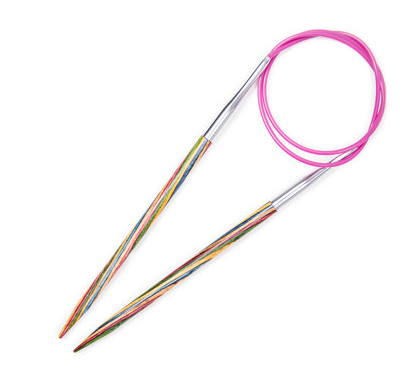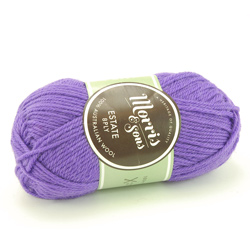Sometimes beginner knitters ask me for advice on a first project. Sometimes, in my knitting group, we discuss what good first projects are. What’s the first thing a new knitter should make? They’ve learnt how to do the basic stitches [aside: there are only two stitches in the whole knitting, and anyone who tells you otherwise is lying, but that’s by the bypass] and now they want to actually make something! What should that thing be?
You’re going to say a scarf. I know you’re going to say a scarf. And John Avocado’s advice for a first project is: do not make a scarf.
If you decide to make a scarf for your first project, there’s a good chance that the main outcome of this project will be that you will hate knitting. This is because there are only two types of scarf: (a) easy and boring, and (b) interesting and difficult. Neither of those is suitable for a beginner. And in fact, those two types are really just subtypes of the one type of scarf that there is: long.
A basic scarf will probably be about 60 inches long and 6 inches wide, and a garter stitch scarf that size using a 10-ply/worsted weight yarn like Cascade 220 at the recommended gauge will have between 14,500 and 18,000 stitches. All knit stitches. And that’s a lot of stitches. And a lot of the same stitches. Over and over and over. Even something like Stephanie Pearl-McPhee’s One Row Handspun Scarf, while a bit les monotonous, is a big project with a lot of stitches, and a new knitter who just wants to get their first project finished really risks getting bored, or resenting a project that seems to be taking so long to finish.
The other reason is that new knitters tend not to be very good at knitting. And there’s no shame there! It’s part of the process of learning to knit: nobody starts good, and people only get better at knitting with practice. When I started knitting, my tension was uneven, my stitches were sloppy, my edges were a mess, and certainly not straight (and though, I should add, straight is not something I strive for generally in life, for the edges of a basic scarf, it’s normally seen as a requirement), and I think this is the case for most new knitters. And the result is that a new knitter embarking on their first project will end up spending a lot of time and effort (and often money!) on this big project, and end up having made something that does not look good. And the risk is that they’ll be so disheartened that they decide they hate knitting and never pick up the needles again.
So I’m very clear when I say to new knitters choosing a first project: do not make a scarf. The chances that this will lead to disappointment are just too high.
So, what to knit? As with choosing any knitting project, I think it’s a good idea to think about what you want to get out of the process: not just the thing you make, but the experience of making it. Do you want a challenge? Do you want to learn new skills or just practise existing ones? There are many considerations, but I think most new knitters have similar goals: they want a first project to be easy and reasonably quick, they want to actually have a finished piece, and it should look reasonably good.
My friend Heather had this dilemma a couple of months ago, and my advice to her was to make something small. And in fact, I recommended the One Row Scarf, but in bookmark size. That way, she’d finish a project before she gave up, would have something that was useful, and would have have something where it wouldn’t matter too much if the stitches didn’t look perfect. (I should add here that the bookmark she made on my recommendation looked stunning.)
Another idea for a first project would be a hat. A basic beanie, nothing fancy. A hat comes together much quicker than a scarf, and it doesn’t have edge stitches (it’s either knitted in the round, or the edge stitches end up in the seam), so the main areas of a piece looking less good disappear. I like the Cozy Cobblestone Cap as a first project: it’s simple, has a mix of knit and purl stitches, as well as decreases and seaming so it’s not boring, it looks good, and it’s knitted flat (I know new knitters tend to be scared of knitting in the round (I certainly was!), and often the only needles a beginner has are straight needles, so I know it’s a consideration).
In summary, a scarf is a big project that will either be boring or difficult, and so it’s not my pick for a first project. Think about what you want to get out of the experience of a first project, and pick something that you can finish quickly, and that will be easy, but with a bit of variety in the stitches to keep you interested and engaged. Most importantly, pick something that you want to have!
Have fun with your knitting, and good luck!


